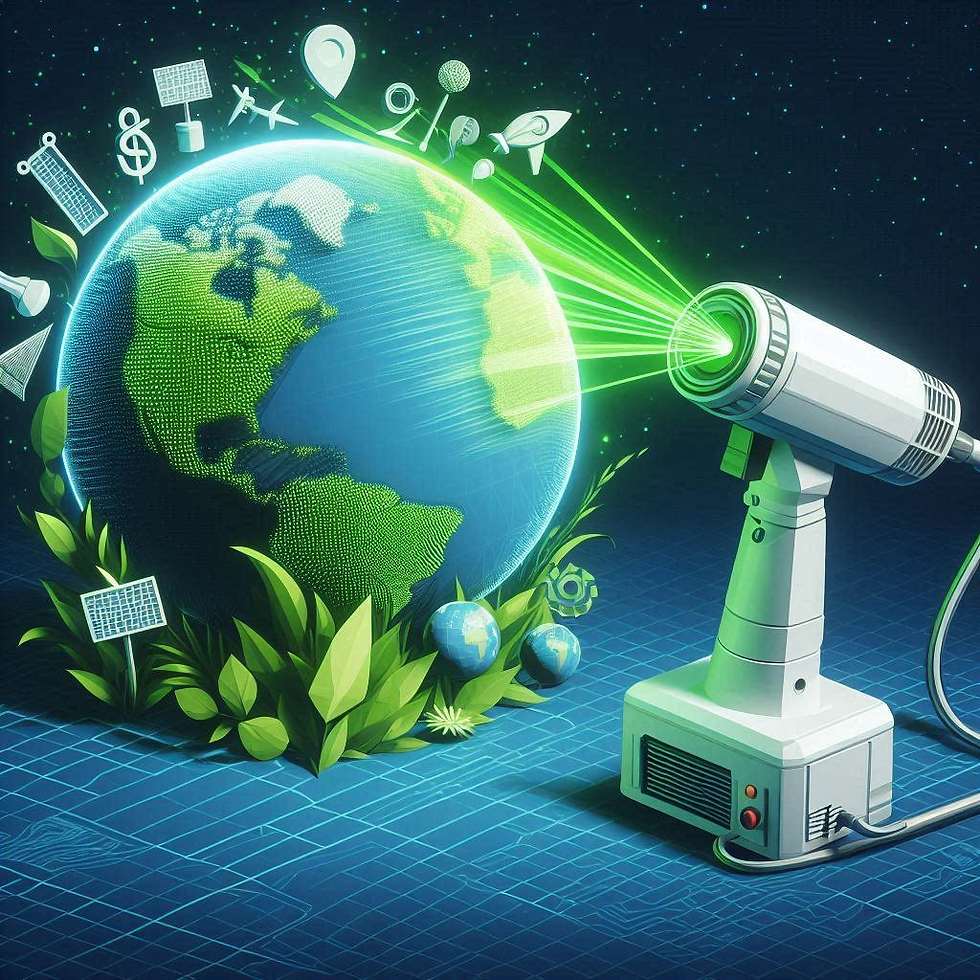How Lasers Work: A Beginner’s Guide
- mainals
- Jul 18, 2024
- 3 min read
Introduction
Lasers are an integral part of modern technology, used in everything from medical devices to entertainment systems. But how do they actually work? This beginner’s guide will break down the basics of laser technology, explaining the principles behind their operation and their various applications.
What is a Laser?
The term “laser” stands for Light Amplification by Stimulated Emission of Radiation. Essentially, a laser is a device that emits light through a process of optical amplification based on the stimulated emission of electromagnetic radiation.
Key Components of a Laser
Gain Medium: This is the material that amplifies the light. It can be a gas, liquid, or solid.
Energy Source: Also known as the pump source, this provides the energy needed to excite the atoms in the gain medium.
Optical Resonator: This consists of two mirrors placed at either end of the gain medium. One mirror is fully reflective, while the other is partially reflective, allowing some light to escape as the laser beam.
How Lasers Work
The Process of Stimulated Emission
The core principle behind laser operation is stimulated emission. When atoms in the gain medium are excited by the energy source, they move to a higher energy state. When these excited atoms return to their lower energy state, they emit photons. If these photons encounter other excited atoms, they can stimulate the emission of more photons, creating a chain reaction.
Amplification and Resonance
The optical resonator plays a crucial role in amplifying the light. The mirrors reflect the photons back and forth through the gain medium, causing more stimulated emission and amplifying the light. The partially reflective mirror allows some of this amplified light to escape, forming the laser beam.
Types of Lasers
Gas Lasers
Gas lasers use a gas as the gain medium. Common examples include helium-neon lasers and carbon dioxide lasers. These lasers are often used in applications like barcode scanning and cutting materials.
Solid-State Lasers
Solid-state lasers use a solid material as the gain medium. Examples include ruby lasers and neodymium-doped yttrium aluminium garnet (Nd:YAG) lasers. These are commonly used in medical procedures and industrial applications.
Semiconductor Lasers
Also known as diode lasers, these use semiconductor materials as the gain medium. They are widely used in consumer electronics, such as DVD players and laser pointers.
Dye Lasers
Dye lasers use organic dyes in liquid form as the gain medium. They are tunable, meaning they can produce a range of wavelengths, and are often used in scientific research.
Applications of Lasers
Medical Applications
Lasers are used in various medical procedures, including eye surgery (LASIK), tattoo removal, and cancer treatment. Their precision allows for minimally invasive procedures with reduced recovery times.
Industrial Applications
In industry, lasers are used for cutting, welding, and engraving materials. Their ability to focus on a small area allows for high precision and efficiency.
Communication
Lasers are used in fibre-optic communication to transmit data over long distances with minimal loss. This technology is the backbone of the internet and modern telecommunications.
Entertainment
Lasers are used in light shows, holography, and even in home entertainment systems like Blu-ray players. Their ability to produce intense, focused light makes them ideal for these applications.
Safety Considerations
While lasers have many beneficial applications, they can also be dangerous if not used properly. Direct exposure to laser beams can cause eye injuries and skin burns. It is essential to follow safety guidelines and use appropriate protective equipment when working with lasers.
Conclusion
Lasers are a fascinating and versatile technology with a wide range of applications. Understanding the basic principles of how they work can help you appreciate their role in modern technology. Whether used in medicine, industry, communication, or entertainment, lasers continue to be a vital part of our daily lives.




Comentários